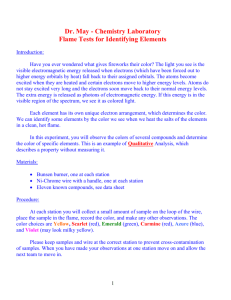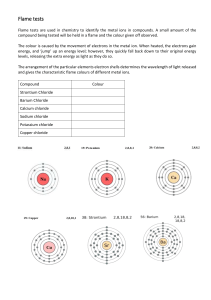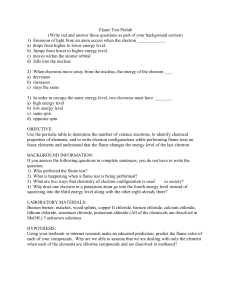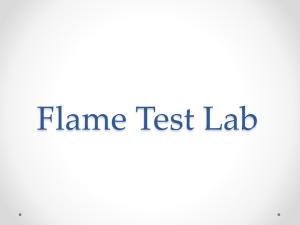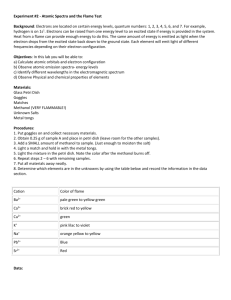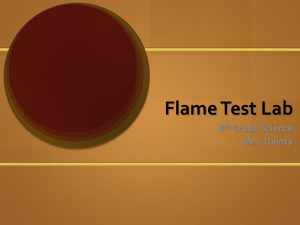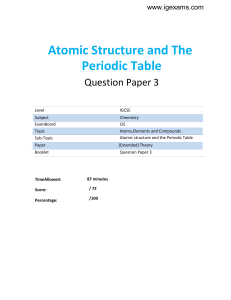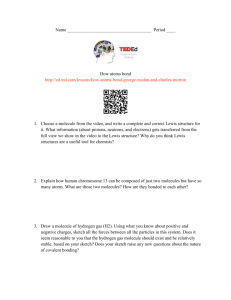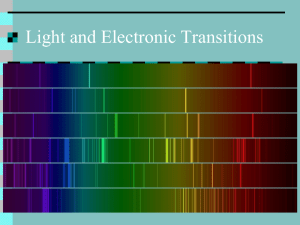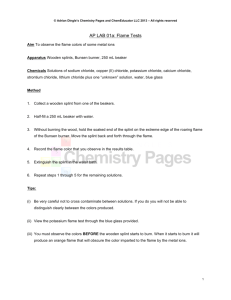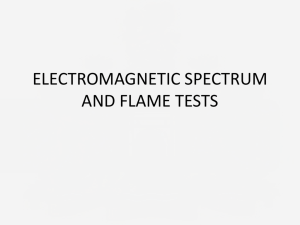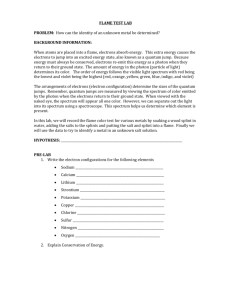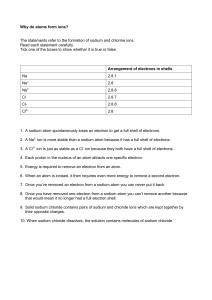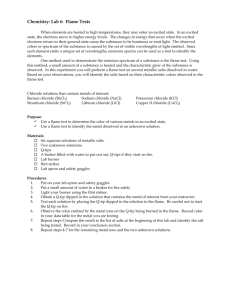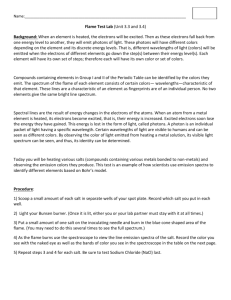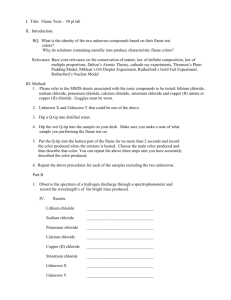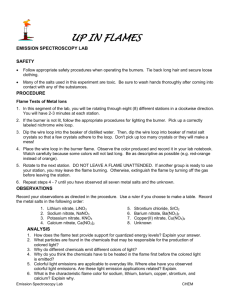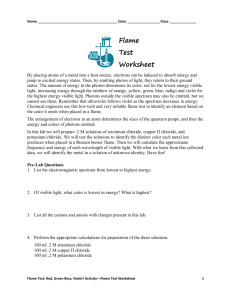Chemistry Laboratory Datasheet #1
advertisement
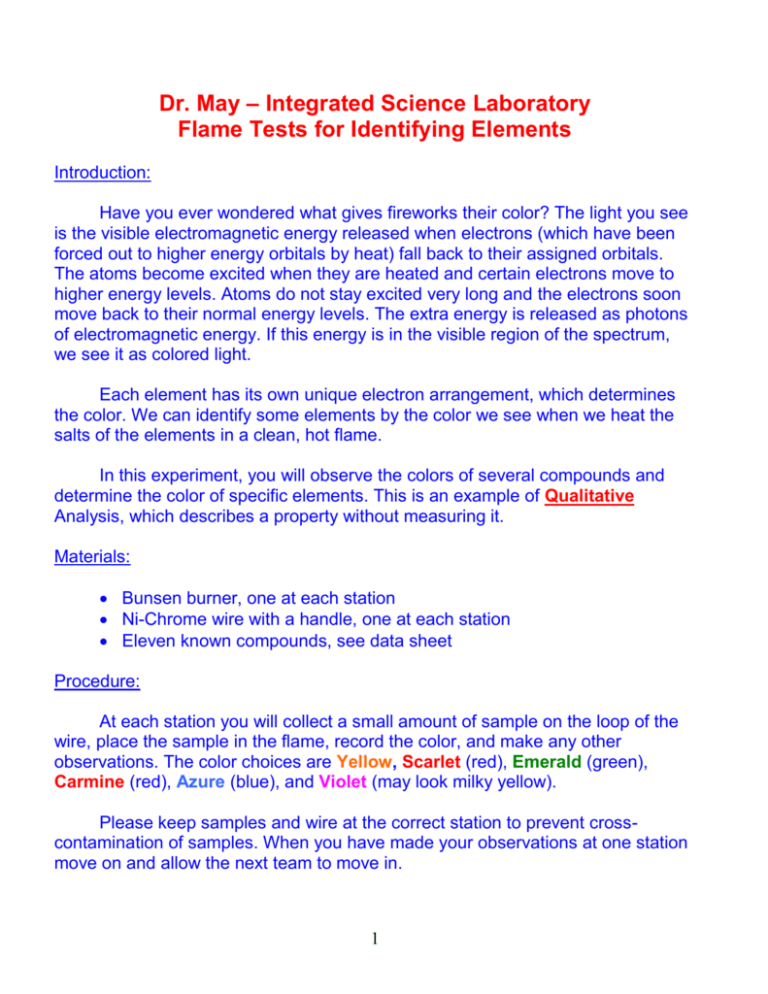
Dr. May – Integrated Science Laboratory Flame Tests for Identifying Elements Introduction: Have you ever wondered what gives fireworks their color? The light you see is the visible electromagnetic energy released when electrons (which have been forced out to higher energy orbitals by heat) fall back to their assigned orbitals. The atoms become excited when they are heated and certain electrons move to higher energy levels. Atoms do not stay excited very long and the electrons soon move back to their normal energy levels. The extra energy is released as photons of electromagnetic energy. If this energy is in the visible region of the spectrum, we see it as colored light. Each element has its own unique electron arrangement, which determines the color. We can identify some elements by the color we see when we heat the salts of the elements in a clean, hot flame. In this experiment, you will observe the colors of several compounds and determine the color of specific elements. This is an example of Qualitative Analysis, which describes a property without measuring it. Materials: Bunsen burner, one at each station Ni-Chrome wire with a handle, one at each station Eleven known compounds, see data sheet Procedure: At each station you will collect a small amount of sample on the loop of the wire, place the sample in the flame, record the color, and make any other observations. The color choices are Yellow, Scarlet (red), Emerald (green), Carmine (red), Azure (blue), and Violet (may look milky yellow). Please keep samples and wire at the correct station to prevent crosscontamination of samples. When you have made your observations at one station move on and allow the next team to move in. 1 If an atom of strontium is exposed to a flame, the atom absorbs some of the light energy. In this excited state, electrons will move from one energy level to a higher level as shown between A and B below. Because excited atoms soon lose the energy they have gained, electrons will drop back to a lower energy level. The diagram below shows an electron of a strontium atom subjected a flame. After absorbing the energy the electron moves from A to a higher level such as B. The atom immediately releases red light when the electron falls back from B back to C. Many electron movements are happening simultaneously but only some of the energy given back is expressed as visible light. Each element has a characteristic color of visible light associated with the energy released when the electrons return to the lower energy levels. The flame lab lets you see some of the beautiful colors of copper (II), lithium, sodium, manganese (II), strontium, potassium, iron, and magnesium ions. B A C nucleus 2 Integrated Science Laboratory Data Sheet Flame Tests for Identifying Elements No. Compound Name 1 Sodium Chloride Table Salt NaCl Strontium Chloride 2 4 SrCl2 Potassium Chloride Salt Substitute KCl Copper Chloride 5 CuCl2 Lithium Chloride 6 LiCl Iron Powder 7 Fe Copper Sulfate 8 CuSO4 Strontium Nitrate 3 9 10 11 Observations Sr(NO3)2 Sodium Bicarbonate Baking Soda NaHCO3 Magnesium Powder Flash Powder Mg Manganese Chloride MnCl2 3
